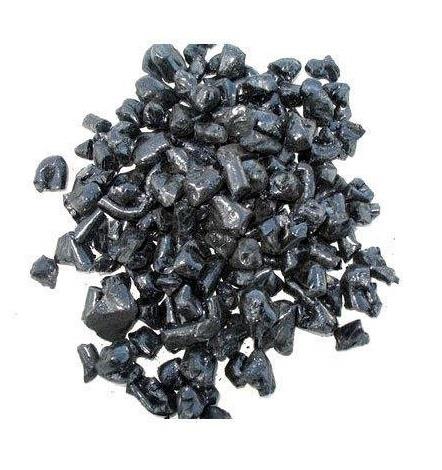Uses of Coal tar
Jan 11,2022
Coal tar is a complex hydrocarbon mixture produced by
thermal destruction (pyrolysis) of coal, typically a dark
viscous liquid or semisolid with a smoky or naphthenic odor.
The composition of coal tar will be influenced by the process
used for pyrolytic distillation as well as by the original
composition of the coal; however all coal tars will be
comprised of a variable mixture of organic compounds
including benzene, toluene, xylenes, cumenes, coumarone,
indene, benzofuran, naphthalene, acenaphthene, methylnaphthalenes,
fluorine, phenol, cresols, pyridine, picolines,
phenanthracene, carbazole, quinolines, fluoranthene, and
pyrene. The number of specific chemical constituents is in the
thousands. Coal tar creosotes and coal tar distillates, oily
liquids generally lighter in color and of lower viscosity than
coal tar, are fractions produced by additional distillation of
crude coal tar. Coal tar pitch is a highly viscous dark semisolid
byproduct of coal pyrolysis. Coal tar volatiles are the vapors
produced from heated coal tar or coal tar pitch, containing
lower molecular weight (smaller ring number) polycyclic
aromatic hydrocarbons (PAHs).
Coal tar is noteworthy as one of the first – if not the first – chemical substances documented to cause cancer through occupational exposures. In the eighteenth century, Sir Percival Pott, a British surgeon, noticed a higher incidence of cancers in chimney sweeps chronically exposed to soot and coal tar. He then demonstrated excess cancers occurring in laboratory animals when coal tar is applied to the ears and skin. In the early twentieth century, polycyclic aromatic compounds isolated from coal tar were identified as chemical carcinogens.

Uses
Coal tar is primarily used as a raw material in the manufacture of plastics, solvents, dyes, and in the manufacturing of other chemicals. Most coal tar undergoes further distillation. Industries that use coal tar include road paving, roofing, smelting, and coking. Coal tar creosote is used as a wood preservative. Coal tar products are also ingredients in medicine (Coal Tar United States Pharmacopeia) used to treat skin diseases such as psoriasis or eczema.
Environmental Fate
Environmental partitioning will vary dependent upon the chemical characteristic of various constituents of coal tar. Photochemical degradation may occur in the atmosphere. If entered into aquatic systems, light hydrocarbon constituents such as benzene will volatilize in the air. Biodegradation in aquatic ecosystems will occur at various rates for different constituents. Large molecules such as PAHs are likely to adsorb to soil and sediment, undergoing slow degradation. Other hydrocarbons, such as phenols, may be readily degraded under aerobic conditions.
Mechanism of Toxicity
Due to the variability in composition, it is not possible to
describe all potential mechanisms of toxicity for coal tar. The
reader is recommended to review additional references for
individual constituents found in the Table of Contents. It is
likely that acidity of some constituents, such as phenols, and
the defatting potential of some hydrocarbons, contribute to the
irritancy of coal tar. Phototoxicity of PAHs is likely to be a main
cause of contact irritation.
The carcinogenicity of PAH constituents is believed to lie in
their potential for their reactive metabolites to be bound to
macromolecules such as DNA. The mechanism of therapeutic value as a topical agent in the treatment of skin diseases is
unknown but is thought to involve decreased epidermal
proliferation.
- Related articles
- Related Qustion
Chloroacetophenone(CN) was first synthesized in 1870 by the Germans. It is used as a riot control agent (RCA) due to its potency as a lachrymatory agent. It got its fame after World War I when it was given the trade name Mace, the first Ame....
Jan 11,2022Organic ChemistryCobalt was discovered by George Brandt in 1737. Cobalt exists in valence states from 0 to 5, with the most stable (+2 and +3) being the most common. Although there is only one stable isotope of cobalt, there are a number of unstable isotope....
Jan 11,2022Inorganic chemistryCOAL TAR
8007-45-2You may like
- How to synthesize Benzyl vinylcarbamate?
Mar 26, 2024
- Polypropylene and Polyvinyl chloride: Which one is better?
Mar 21, 2024
- How to synthesize Isoprene?
Mar 20, 2024
- COAL TAR
-

- $1.00 / 1KG
- 2019-08-08
- CAS:8007-45-2
- Min. Order: 1KG
- Purity: 98%
- Supply Ability: 1kg,10kg,100kg




